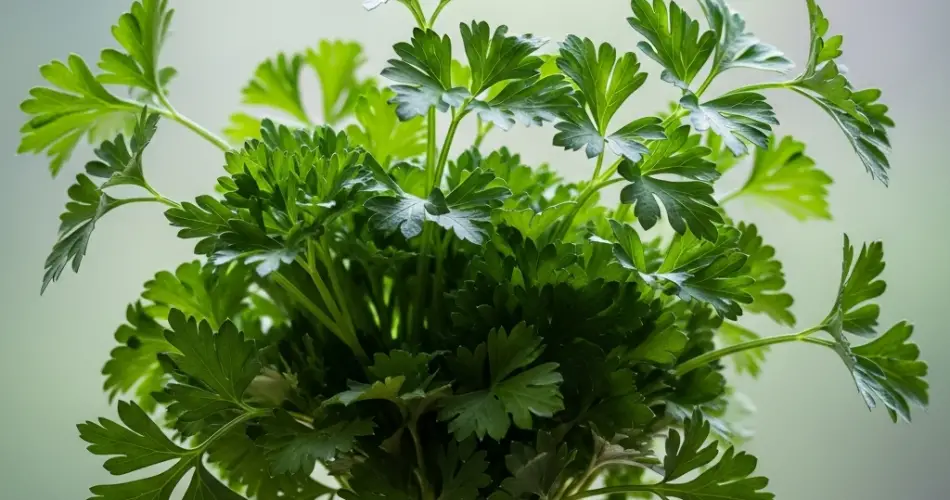Parsley is a versatile and nutritious herb that’s easy to grow in the garden or indoors. While it’s commonly propagated from seeds, you can also regrow parsley from cuttings—an effective method that saves time and ensures you get a clone of a healthy, established plant. This technique is especially useful for gardeners who want to multiply a productive parsley plant or avoid the slow germination process that parsley seeds are known for.
In this guide, you’ll learn step by step how to regrow parsley from cuttings, along with tips to ensure strong rooting and healthy growth.
Why Regrow Parsley from Cuttings?
Although not as common as seed propagation, growing parsley from cuttings has its advantages:
-
Faster establishment compared to seed-starting
-
Cloning of vigorous plants, preserving traits like strong flavor or disease resistance
-
Convenient year-round growing, especially indoors
-
No need to buy new seeds each season
While it’s true that parsley doesn’t root as easily as soft-stemmed herbs like basil or mint, with the right approach and patience, cuttings can develop healthy roots and produce lush new growth.
Choosing the Right Parsley Variety
Before you begin, consider what type of parsley you want to propagate:
-
Curly-leaf parsley (Petroselinum crispum) – Has decorative ruffled leaves and is often used as a garnish.
-
Flat-leaf parsley (Petroselinum neapolitanum) – Also known as Italian parsley, it has a stronger flavor and is preferred for cooking.
Both types can be regrown from cuttings using the same method, so choose the variety that suits your culinary needs.
What You’ll Need
To regrow parsley from cuttings, gather the following materials:
-
A healthy, mature parsley plant
-
Sharp scissors or pruning shears
-
A glass or jar of water
-
Small pots with drainage holes
-
Potting mix (light and well-draining)
-
Optional: rooting hormone (for faster results)
How to Take Parsley Cuttings
-
Select healthy stems
Choose non-flowering stems from a mature parsley plant. Each cutting should be 4 to 6 inches long and have several sets of leaves. -
Cut below a node
Make a clean cut just below a leaf node (the bump where leaves grow from the stem). This is where roots are most likely to form. -
Remove lower leaves
Strip off the lower leaves from the bottom 2 inches of the cutting to prevent them from rotting in water or soil. -
Optional: Dip in rooting hormone
While not necessary, dipping the cut end into rooting hormone can increase your success rate, especially with herbs like parsley that are slower to root.
Rooting the Cuttings in Water
-
Place in a glass of water
Submerge the lower part of the cutting (just the bare stem, not the leaves) in a jar or glass of clean water. -
Provide bright, indirect light
Set the glass in a warm spot with indirect sunlight, such as a windowsill. Avoid direct sun, which can cause the cutting to wilt. -
Change the water regularly
Replace the water every two to three days to keep it clean and oxygenated, which helps prevent fungal growth. -
Wait for root development
In about 2 to 4 weeks, you should see small white roots emerging from the cuttings. Wait until the roots are about 1 to 2 inches long before transplanting.
Transplanting Rooted Cuttings
Once the cuttings have developed healthy roots, it’s time to move them into soil:
-
Prepare the pot
Fill a small container with a well-draining potting mix. A mix designed for herbs or vegetables works well. -
Plant gently
Make a small hole in the center of the soil and insert the cutting, covering the roots completely. Firm the soil around the base. -
Water thoroughly
Water the newly potted cutting well and keep the soil consistently moist (but not soggy) during the first few weeks. -
Transition to sunlight
Start the plant in indirect light for a few days, then gradually move it to a sunnier location. Parsley prefers at least 4 to 6 hours of light daily.
Ongoing Care for Regrown Parsley
Once your parsley cutting is well established in its new container, care for it as you would any other parsley plant:
-
Water regularly: Keep the soil slightly moist but avoid overwatering.
-
Fertilize occasionally: Use a diluted, balanced liquid fertilizer every 4–6 weeks during the growing season.
-
Harvest frequently: Begin harvesting leaves once the plant is at least 6 inches tall. Regular harvesting encourages fuller, bushier growth.
If growing indoors, rotate the pot weekly to prevent the plant from leaning toward the light.
Final Thoughts
Regrowing parsley from cuttings is a practical and rewarding way to multiply your herb supply without starting from seed. With a bit of patience and the right conditions, you can root parsley stems in water and transplant them into soil for a fresh, homegrown harvest. This method works well in small-space gardens, windowsill planters, or any kitchen herb setup. Try it once, and you’ll likely find yourself propagating parsley every season.



